Reviews
Panu Rajala: Hirmuinen humoristi. Veikko Huovisen satiirit ja savotat [The awesome humorist. The satires and logging sites of Veikko Huovinen]
16 May 2013 | Mini reviews, Reviews
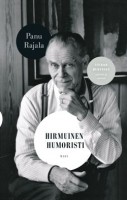 Hirmuinen humoristi. Veikko Huovisen satiirit ja savotat
Hirmuinen humoristi. Veikko Huovisen satiirit ja savotat
[The awesome humorist. The satires and logging sites of Veikko Huovinen]
Helsinki: WSOY, 2012. 310 p.
ISBN 978-951-0-38952-2
€38, hardback
Author Veikko Huovinen (1927–2009) became widely popular with the publication of his novel Havukka-ahon ajattelija (‘The backwoods philosopher’, 1952). Huovinen, who trained as a forest ranger, spent his life mainly in north-eastern Finland and did not like publicity; the author and theatre scholar Panu Rajala deals with Huovinen’s biography relatively briefly, focusing on a thematic analysis of Huovinen’s extensive and thematically rich output of novels and short stories. He places the the books in the context of Finnish literature, and also examines their film and television adaptations. Huovinen was an intellectually conservative, a highly original humorist; among his books are satirical biographies of Hitler and Stalin. His prose fiction, set in the natural wilds of the North, has not always won the appreciation of pro-modernist critics. Huovinen’s lively and original language is not easy to translate – for example, his only work published in English is a beautiful documentary novel Puukansan tarina (‘Tale of the forest folk’), which received a Finlandia Prize nomination in 1984.
Translated by David McDuff
Forest and fell
8 May 2013 | Reviews
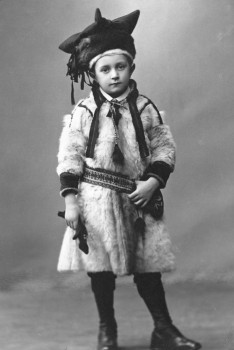
From North to South: young Heikki Soriola on his way to represent Utsjoki in Helsinki, in 1912. Photo from Saamelaiset suomalaiset
Veli-Pekka Lehtola
Saamelaiset suomalaiset: Kohtaamisia 1896–1953
[Sámi, Finns: encounters 1896–1953]
Helsinki: Suomalaisen Kirjallisuuden Seura, 2012. 528 p., ill.
ISBN 978-952-222-331-9
€53, hardback
Leena Valkeapää
Luonnossa: Vuoropuhelua Nils-Aslak Valkeapään tuotannon kanssa
[In nature, a dialogue with the works of Nils-Aslak Valkeapää]
Helsinki: Maahenki, 2011. 288 p., ill.
ISBN 978-952-5870-54-1
€40, hardback
The study of the Sámi people, like that of other indigenous peoples, has become considerably more diverse and deeper over recent decades. Where non-Sámi scholars, officials and clergymen once examined the Sámi according to the needs and values of the holders of power, contemporary scholarship starts out from dialogue, from an attempt to understand the interactions between different groups. More…
Marjo Niemi: Ihmissyöjän ystävyys [The cannibal’s friendship]
8 May 2013 | Mini reviews, Reviews
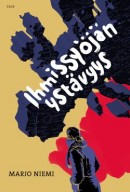 Ihmissyöjän ystävyys
Ihmissyöjän ystävyys
[The cannibal’s friendship]
Helsinki: Teos, 2012. 402 p.
ISBN 978-951-851-359-2
€27.80, hardback
Marjo Niemi’s third novel may be described with the adjective ‘intemperate’. The book’s narrator is a thirty-something woman who is inclined to ranting. A friend’s suicide drives her to depression, which breaks out in endless criticism of her friends’ lifestyles. Her tolerance is tested not only by her hedonistic friends but also by an entire continent: she wallows in endless diatribes about the history of Europe and its injustices. The bubbling text forms a meta-level, a book within a book. Only writing seems meaningful: ‘I am really not going to write about my life, because life is a ridiculous joke compared to literature.’ The Great Novel that is being built by the narrator gradually opens out into a story about a mental hospital psychiatrist and one of his patients who has suffered a loss of memory. The author sees her work as a ‘poetic allegory of Europe ‘, but it is also a study of friendship, guilt, envy, and the difficulty of doing good. Caricature of an almost grotesque kind is skilfully combined with straight talking in this clever contemporary novel. Niemi (born 1978) is a dramaturge by training.
Translated by David McDuff
Nils Erik Villstrand: Valtakunnanosa. Suurvalta ja valtakunnan hajoaminen 1560–1812 [The constituent state. Great power and disintegration 1560–1812]
26 April 2013 | Mini reviews, Reviews
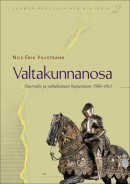 Valtakunnanosa. Suurvalta ja valtakunnan hajoaminen 1560–1812. Suomen ruotsalainen historia 2
Valtakunnanosa. Suurvalta ja valtakunnan hajoaminen 1560–1812. Suomen ruotsalainen historia 2
[The constituent state. Great power and disintegration 1560–1812. Finland’s Swedish history 2]
[Swedish-language original: Riksdelen. Stormakt och rikssprängning 1560–1812, 2008]
Suom. [Finnish translation by] Jussi T. Lappalainen, Hannes Virrankoski
Helsingfors: Svenska litteratursällskapet i Finland, 2012. 424 p., ill.
ISBN 978-951-583-256-6
€40,hardback
This book is the second volume in a four-part series on the Swedish history of Finland. Finland was part of Sweden until 1809, when as a result of war between Sweden and Russia it came under the control of the latter; the change of governance was more or less ratified in a meeting of the Swedish Crown Prince and the Russian Tsar at Turku in 1812. Finland was reunited with its eastern region of ‘Old Finland’, which had long been a part of Russia. In his fascinating book Villstrand examines the Swedish period from several angles, using the viewpoints both of the elite and of the common people. He also reviews the conceptions of the scholars of the time, and portrays the life of the administrative and ecclesiastical circles. A special chapter is devoted to the ‘Finnish period’ of 1721–1809, when Finland gained a particular importance because of the growing threat from Russia. Finland was in many respects an equal part of Sweden, and when the country was ceded to Russia as a Grand Duchy, its old administrative and social systems were largely preserved intact. Swedish also survived for a long time, especially as the language of culture. The book’s apt illustrations are a splendid adjunct to its content.
Translated by David McDuff
Kari Tarkiainen: Ruotsin Itämaa. Esihistoriasta Kustaa Vaasaan [Sweden’s Eastland. From prehistoric times to Gustav Vasa]
18 April 2013 | Mini reviews, Reviews
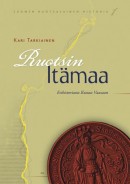 Ruotsin Itämaa. Esihistoriasta Kustaa Vaasaan
Ruotsin Itämaa. Esihistoriasta Kustaa Vaasaan
[Sweden’s Eastland. From prehistoric times to Gustav Vasa].
[Finlands svenska historia del 1: Sveriges Österland. Från forntiden till Gustav Vasa, 2008; Finland’s Swedish history vol. 1, translated into Finnish by the author]
Helsingfors: Svenska litteratursällskapet i Finland, 2010. 331 p., ill.
ISBN 978-951-583-212-2
€39.90, hardback
The historian and archivist Kari Tarkiainen is starting a four-volume series with the general title ‘Finland’s Swedish history’: it forms part of a project funded by Finland’s Swedish-language cultural organisations. This book examines Finland’s prehistoric, medieval and early modern periods, with special emphasis on the two-way relations between Swedes and Finns, and their mutual influence. Initially Finland’s annexation by Sweden from the 12th to the 14th century as ‘Österland’ (Eastland) was a process that involved many stages and also some belligerence, as the Republic of Novgorod in the east also laid claim to the region. Settlements of Swedish-speakers were established on the Åland islands and the coasts; the Swedish Catholic Church (replaced during the Reformation by the Lutheran Church) and the Swedish-language administrative and social system extended their influence on the country, even though Finnish remained the principal language of Finns. Finland remained part of Sweden until the early 19th century. Ruotsin Itämaa is a fascinating book, which draws on archeology, linguistics and onomastics, and is beautifully illustrated.
Translated by David McDuff
Anna-Leena Siikala: Itämerensuomalaisten mytologia [Baltic Finnic mythology]
12 April 2013 | Mini reviews, Reviews
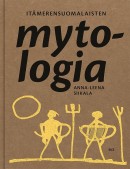 Itämerensuomalaisten mytologia
Itämerensuomalaisten mytologia
[Baltic Finnic mythology]
Helsinki: Finnish Literature Society, 2013. 536 p., ill.
ISBN 978-952-222-393-7
€ 45, hardback
Academician and Professor Emeritus of Folklore Anna-Leena Siikala presents a overview of her research. The book also makes use of the latest research in other fields in order to chart Baltic Finnic folk poetry, shamanism and folk beliefs. The Kalevala, Elias Lönnrot’s epic poem based on Finnish folklore, forms only a part of the poetry written in Kalevala metre. Although the poem is often perceived to be Finno-Karelian in origin, around half of its material is also known in Estonia: many of the poems and myths have links to Uralic and Germanic tradition. By means of numerous examples Siikala illustrates the different styles of folk poetry, its manifestations of vernacular religion and its rich mythology. In Finland the poems became modified over the centuries, influenced by the Christian faith, among other things. In different areas the figure of the divine hero Väinämöinen has acquired different emphases: it is less a question of mythology than of mythologies. The book’s illustrations are rich and informative, and the work is a unique treasure trove in its field.
Translated by David McDuff
Jukka Sarjala: Kotomaamme outo Suomi [Finland, our strange homeland]
4 April 2013 | Mini reviews, Reviews
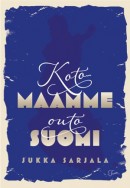 Kotomaamme outo Suomi
Kotomaamme outo Suomi
[Finland, our strange homeland]
Helsinki: Teos, 2013. 264 p.
ISBN 978-951-851-440-7
€ 27, paperback
Jukka Sarjala, ex-director general of the Finnish National Board of Education and bibliophile, is the author of several works of non-fiction, mainly in the field of history. In this book he focuses on the phenomena and events that characterised early twentieth-century Finland, some of them rather peculiar. In a couple of dozen chapters written in a humorous and conversational style the author does not conceal his own opinions, for example, on the foolishness of politicians. Much of the writing is devoted to the era of Finnish independence and the Finnish Civil War, as well as to episodes from political history, such as the story of the attempt to import to the newly independent country a German-born prince as King of Finland, the vagaries of the political far right and far left, the recruitment of Finnish Reds into the British Army – and the horse that gave rise to a small rebel movement. Sarjala draws many fascinating portraits of early twentieth-century figures, for example the utopian socialist Matti Kurikka and the founder of a party that in some ways anticipated the present-day True Finns [Perussuomalaiset], the talkative politician Veikko Vennamo (1913–1997). Although the book lacks footnotes and a bibliography, it demonstrates its author’s extensive reading.
Translated by David McDuff
On the road, in the world
21 March 2013 | Reviews
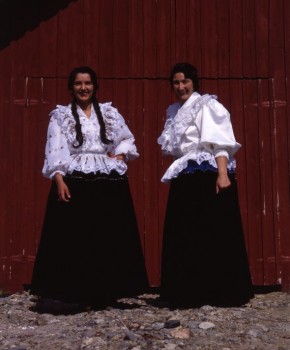
In Romani dress: Finnish Romani women still wear their traditional velvet skirts (which weigh 5-8 kilos). Photo: Topi Ikäläinen, 1983
Suomen romanien historia
[A history of Finland’s Romani people]
Toimittanut [Edited by] Panu Pulma
Helsinki: Suomalaisen Kirjallisuuden Seura (the Finnish Literature Society), 494 p., ill.
ISBN 978-952-222-364-7
€57, hardback
The Romani people set out from India around a thousand years ago; there are those who even claim that they originated in Egypt long before that. This latter account was favoured among the Romani in Europe, and so their leaders took to styling themselves the Dukes of ‘Egypt Minor’ or ‘Little Egypt’.
The Romani of Europe are generally considered to have come from northern India in the 15th century. They arrived in Finland – which at that time was part of Sweden – in 1512.
Five hundred years later, it seems a fitting time to publish Suomen romanien historia, a volume edited by Panu Pulma, PhD, a university lecturer in Finnish and Nordic history, with chapters contributed by a total of 14 additional experts.
The Romani who reached Stockholm, also in 1512, were said to be from ‘Egypt Minor’. This purported connection with Egypt is the origin behind the English word gypsy. The Swedish word zigenare (related to the German Zigeuner) did not come into use until the 17th century. More…
Johanna Holmström: Asfältsänglar [Asphalt angels]
21 March 2013 | Mini reviews, Reviews
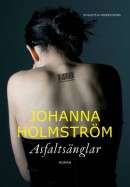 Asfältsänglar
Asfältsänglar
[Asphalt angels]
Helsinki: Schildts & Söderströms, 2012. 294p.
ISBN 978-951-52-3120-8
€29.90, hardback
Finnish translation:
Itämaa
Helsinki: Otava, 2012. 333 p.
Suom. [Translated by] Tuula Kojo
ISBN 978-951-1-26841-3
€29.90, hardback
The immigrant novel has not played a significant role in contemporary Finnish literature; since the wave of Russian refugees in the early 19th century, there have been few immigrants to Finland. In her short story collection Camera Obscura (2009) Johanna Holmström (born 1981) managed to combine realism and fantasy in a fascinating way; her new novel, Asfaltsänglar, is the directly yet eloquently told story of two young immigrant sisters. Leila, bullied at school, is becoming a drop-out, while Samira, who has tried to live according to western norms, lies unconscious after an unexplained accident. Their Finnish mother is a fanatical convert to Islam and their father comes from the Maghreb region. The novel confronts claustrophobic Arabic family culture and western ideals of freedom, taken so far that people completely lose any sense of responsibility for one another, with the adults’ betrayal of their children playing a key role. Holmström goes to great lengths to give a balanced portrayal of both cultures and show why her characters act as they do, even when the results are tragic.
Translated by Claire Dickenson
Maailman paras maa [The best country in the world]
14 March 2013 | Mini reviews, Reviews
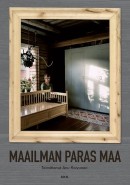 Maailman paras maa
Maailman paras maa
[The best country in the world]
Toim. [Ed. by] Anu Koivunen
Helsinki: Suomalaisen Kirjallisuuden Seura, 2012. 255 p., ill.
ISBN 978-952-222-347-0
€ 37, paperback
In this book twelve writers, representing various fields of research, ponder Finland and Finnishness from the viewpoint of history, ethnology, society, culture and economics. Finland-Swedishness and the relationship between Finns and Russians, the need of Finns to defend their participation in the Second World War in alliance with Germany as a ‘separate war’, and the nostalgia related to lost Karelia. The articles deal with Finland facing economic challenges, attitudes towards foreign beggars and self-critical Finnish opinion pieces. They also take a look at Finnish man as portrayed in the classic novel Seitsemän veljestä (‘The seven brothers’, 1870, by Aleksis Kivi) and in a recent prize-winning film about men talking in the sauna about their feelings, and discuss the relationship of the two national languages, Finnish and Swedish. Well-written and original articles question truisms and challenge the reader contemplate his or her own relationship with Finnishness.
Happy days, sad days
28 February 2013 | Reviews
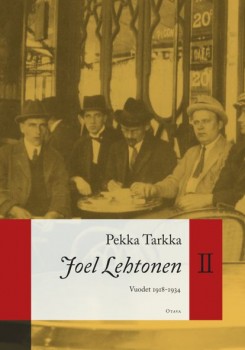 Pekka Tarkka
Pekka Tarkka
Joel Lehtonen II. Vuodet 1918–1934
[Joel Lehtonen II. The years 1918–1934]
Helsinki: Otava, 2012. 591 p., ill.
ISBN 978-951-1-25924-4
€38.50, hardback
A well-meaning bookseller’s idealism, inspired by Tolstoyan ideology, is brought crashing down by the laziness and ingratitude of the man hired to look after his estate: conflicts between the bourgeoisie and the ‘ordinary folk’ are played out in heart of the Finnish lakeside summer idyll in Savo province.
Taking place within a single day, the novel Putkinotko (an invented, onomatopoetic place name: ‘Hogweed Hollow’) is one of the most important classics of Finnish literature. Putkinotko was also the title of a series (1917–1920) of three prose works – two novels and a collection of short stories – sharing many of the same characters [here, a translation of ‘A happy day’ from Kuolleet omenapuut, ‘Dead apple trees’, 1918] .
In 1905 Joel Lehtonen bought a farmstead in Savo which he named Putkinotko: it became the place of inspiration for his writing. With an output that is both extensive and somewhat uneven, the reputation of Joel Lehtonen (1881–1934) rests largely on the merits of his Putkinotko, written between 1917 and 1920. More…
Riku Korhonen: Nuku lähelläni [Sleep close to me]
28 February 2013 | Mini reviews, Reviews
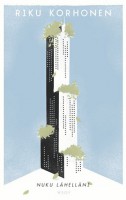 Nuku lähelläni
Nuku lähelläni
[Sleep close to me]
Helsinki: WSOY, 2012. 300 p.
ISBN 978-951-0-39305-5
€29.90, hardback
Contrary to the more agreeable expectations that might be prompted by its title, this book is dominated by the image of a masked anarchist raising his hand in a cloud of teargas. Korhonen (born 1972) is an analyst of social problems who in his most recent novels has expanded his field of vision from the realities of suburban Finland to the global centres of money and power. This novel, his fifth book, offers a pessimistic picture of Europe today. The collapse of the economy has left people with an inner sense of emptiness and anger. A young man travels to a central European financial centre to collect his brother’s corpse. The dead man had a management level job in banking, but his body is discovered with an anti- globalisation protest mask on its face. Analysis of the world situation is combined with elements of a detective thriller. The novel’s love affair is likened to a business deal: capital, profit and risk are equated with desire, hope and sorrow. This anti-capitalist metaphor is a typical theme of contemporary Finnish prose fiction.
Translated by David McDuff
Jörn Donner: Mammuten [The mammoth]
14 February 2013 | Mini reviews, Reviews
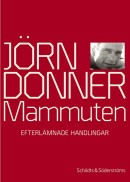 Mammuten. Efterlämnade handlingar
Mammuten. Efterlämnade handlingar
[The mammoth. Leftover business]
Helsinki: Schildts & Söderströms, 2013. 1,128 p., ill.
ISBN 978-951-152-311-54
€37.90, hardback
Finnish translation:
Mammutti. Jälkeenjääneet tekoset
Helsinki: Otava, 2013. 1,087 p., ill.
Suom. [Translated by] Kari Koski
ISBN 978-951-126-311-1
€69,90, hardback
Born in 1933 to a Swedish-speaking family in Helsinki, Jörn Donner, a prominent figure in Finland and Sweden for decades, has published some sixty books. His novel Far och son (‘Father and son’) won him the Finlandia Prize for Fiction in 1985. He has directed and produced films; as a producer he received an Academy Award for Ingmar Bergman’s film Fanny and Alexander. Donner has served two terms in the Finnish Parliament and one in the European Parliament, and represented or supported five different political parties, from the Moscow-loyal Left to the right-wing National Coalition party. Donner’s life has often been the subject of television programmes and he has never passed up the opportunity for more or less well-considered provocations. When he publishes his autobiography at the age of eighty, expectations are high, but Mammuten does not live up to them. It is a sloppy collage of old newspaper articles and introverted diary entries; what emerges is the picture of a man who is disappointed in almost everything he has achieved in life and who sees most of his human relationships as failures. Strangely enough, of the principles that have guided his restless activity and the goals he has striven for in the longer term, Donner writes almost nothing.
Translated by David McDuff
Elina Lappalainen: Syötäväksi kasvatetut. Miten ruokasi eli elämänsä [Bred for the table. How your food lived its life]
8 February 2013 | Mini reviews, Reviews
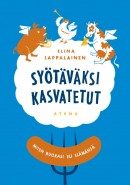 Syötäväksi kasvatetut. Miten ruokasi eli elämänsä
Syötäväksi kasvatetut. Miten ruokasi eli elämänsä
[Bred for the table. How your food lived its life]
Jyväskylä: Atena, 2012. 355 p, ill.
ISBN 978-951-796-843-0
€ 29, paperback
The development of animal welfare depends not only on producers, legislation and control, but also on the preferences of central trading and consumers. In her first book, young journalist Elina Lappalainen describes the conditions in which pigs, cattle and chickens live in Finland before they end up on the table. The living conditions for these are on average better than in many other countries, but they are still often poor. For example, it is difficult to build poultry farms of thousands of chickens, and it matters whether the birds live in cages, are organically grown or a deep litter system is used. Large-scale production does not necessarily mean that pigs, for example, are worse off than they would have been formerly on a small pig farm. On average, the best conditions are provided for cattle, though even most of those spend the long winter in a stanchion barn. Lappalainen has written a thoroughly researched, interesting and balanced review of this internationally important and even emotionally sensitive issue. The book was awarded the prestigious Finlandia Prize for Non-Fiction 2012.
Translated by David McDuff
Osmo Jussila: Neuvostoliiton tragedia. Utopiasta vankileirien saaristoksi [The tragedy of the Soviet Union. From utopia to Gulag Archipelago]
31 January 2013 | Mini reviews, Reviews
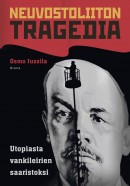 Neuvostoliiton tragedia. Utopiasta vankileirien saaristoksi
Neuvostoliiton tragedia. Utopiasta vankileirien saaristoksi
[The tragedy of the Soviet Union. From utopia to Gulag Archipelago]
Helsinki: Otava, 2012. 448 p., ill.
ISBN 978-951-1-26521-4
€32.80, hardback
The acclaimed Russian and Soviet history scholar Osmo Jussila examines the early history of the Soviet Union from a fresh perspective. He shows how, in the years following the 1917 Revolution, an originally positive idea for a better society turned into a bureaucratic tyranny. The Soviet Union’s strong man V.I. Lenin created the Bolshevist Party as a paramilitary organisation which managed to seize power in October 1917. Even in the early years of Soviet power the ‘Red Terror’ crushed its opponents with executions and the establishment of prison camps. Although Lenin was a good professional revolutionary, he was almost incapable of building a new society: his solutions were often cruel, arbitrary and hasty. Jussila’s general view of Lenin is in line with the ideas that are familiar from more recent historical research, but the author also focuses and deepens his analysis to provide an essentially complete picture of Soviet Russia’s chaotic development and of Lenin’s role in the formation of the oppressive Soviet state.
Translated by David McDuff
